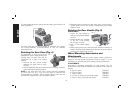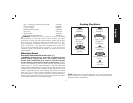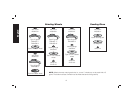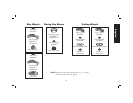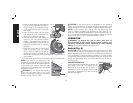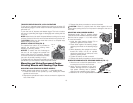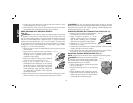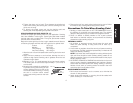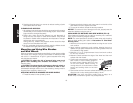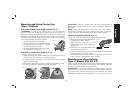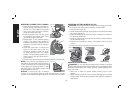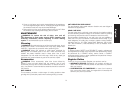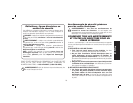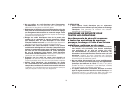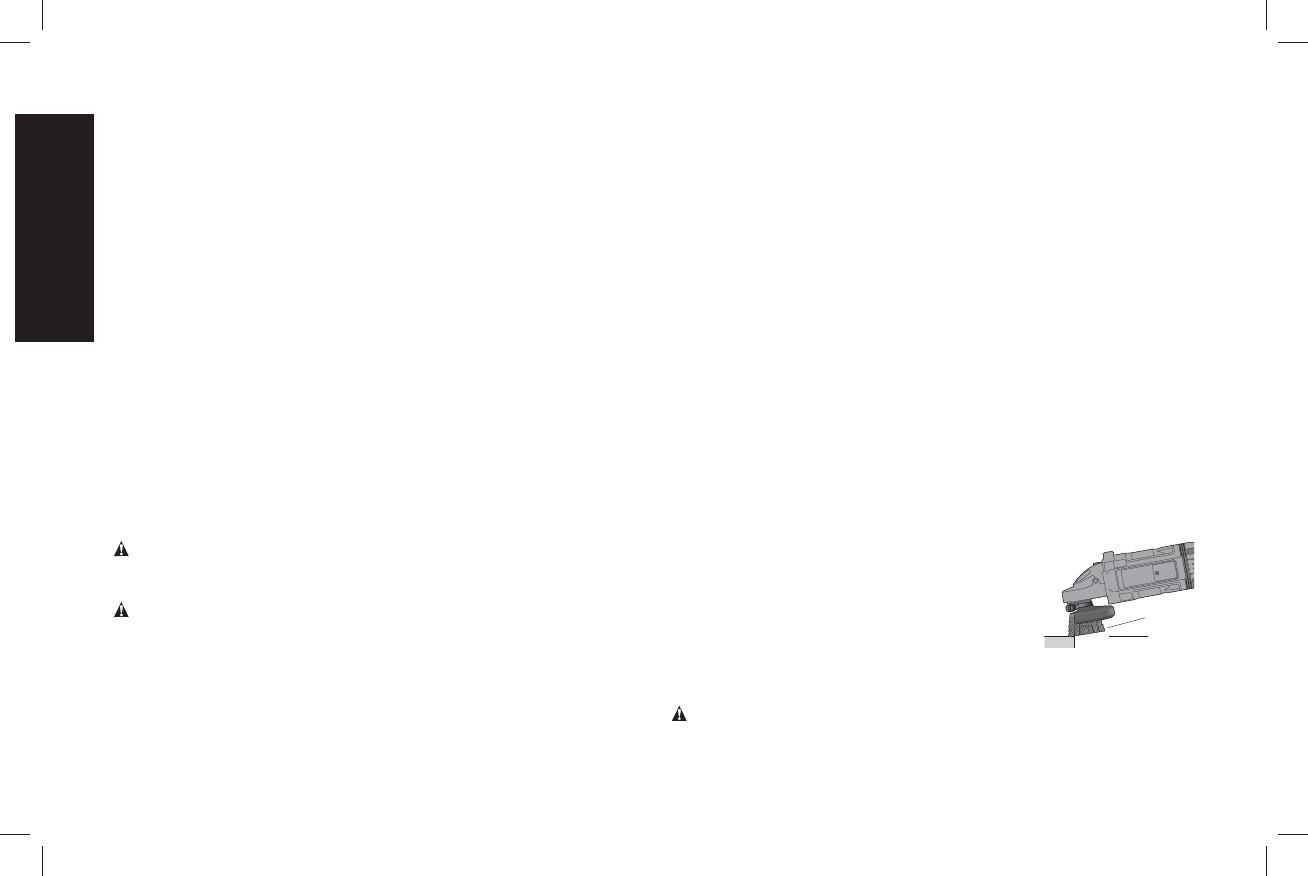
3. Sanding should be done in a manner to reduce tracking of paint
dust outside the work area.
CLEANING AND DISPOSAL
1. All surfaces in the work area should be vacuumed and thoroughly
cleaned daily for the duration of the sanding project. Vacuum filter
bags should be changed frequently.
2. Plastic drop cloths should be gathered up and disposed of
along with any dust chips or other removal debris. They should
be placed in sealed refuse receptacles and disposed of through
regular trash pick-up procedures.
During clean up, children and pregnant women should be kept
away from the immediate work area.
3. All toys, washable furniture and utensils used by children should
be washed thoroughly before being used again.
Mounting and Using Wire Brushes
and Wire Wheels
Wire cup brushes or wire wheels screw directly on the grinder spindle
without the use of flanges. Use only wire brushes or wheels provided
with a 5/8"–11 threaded hub. A Type 27 guard is required when using
wire brushes and wheels.
CAUTION: To reduce the risk of personal injury, wear work
gloves when handling wire brushes and wheels. They can
become sharp.
CAUTION: To reduce the risk of damage to the tool, wheel or
brush must not touch guard when mounted or while in use.
Undetectable damage could occur to the accessory, causing wires to
fragment from accessory wheel or cup.
MOUNTING WIRE CUP BRUSHES AND WIRE WHEELS
1. Thread the wheel on the spindle by hand.
2. Depress spindle lock button and use a wrench on the hub of the
wire wheel or brush to tighten the wheel.
3. To remove the wheel, reverse the above procedure.
NOTICE: To reduce the risk of damage to the tool, properly seat the
wheel hub before turning the tool on.
USING WIRE CUP BRUSHES AND WIRE WHEELS (FIG. 16)
Wire wheels and brushes can be used for removing rust, scale and
paint, and for smoothing irregular surfaces.
NOTE: The same precautions should be taken when wire brushing
paint as when sanding paint (refer to Precautions To Take When
Sanding Paint).
1. Allow the tool to reach full speed before touching the tool to the
work surface.
2. Apply minimum pressure to work surface, allowing the tool to
operate at high speed. Material removal rate is greatest when the
tool operates at high speed.
3. Maintain a 5° to 10° angle between the tool and work surface
for wire cup brushes.
4. Maintain contact between the edge of the wheel and the work
surface with wire wheels.
5. Continuously move the tool in a forward and
5˚–10˚
FIG. 16
back motion to avoid creating gouges in
the work surface. Allowing the tool to rest
on the work surface without moving, or
moving the tool in a circular motion causes
burning and swirling marks on the work
surface.
6. Remove the tool from the work surface before turning the tool off.
Allow the tool to stop rotating before setting it down.
CAUTION: Use extra care when working over an edge, as a
sudden sharp movement of grinder may be experienced.
English
18



